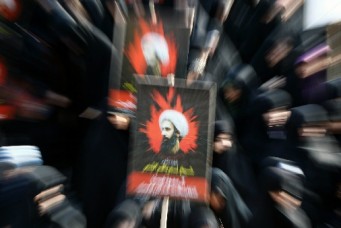Big Issues Revolve Around Tehran
The Moscow-Washington tango that resulted in the Syrian chemical weapons agreement was a first class diplomatic show that will be analyzed by political scientists and pretzel makers for a generation. Every actor in the spectacle claims victory and national strategic benefits, as always occurs in successful diplomacy.
The Moscow-Washington tango that resulted in the Syrian chemical weapons agreement was a first class diplomatic show that will be analyzed by political scientists and pretzel makers for a generation. Every actor in the spectacle claims victory and national strategic benefits, as always occurs in successful diplomacy. The complexity of the cause-and-effect debate is what interests the pretzel makers, whose own fine handiwork defies the attempts of rational people to determine with precision where the pretzel starts and where it ends.
The Russian-American agreement on Syria begs analysis and any possible credible answers on three important questions. The first is for academics and historians because it is unlikely to get a definitive answer: What role did the American threat of the use of force against Syria play in pushing the parties to an agreement? Arguments on both sides of this question reflect existing ideological positions on issues like the degree of coherence in U.S. policy in the Middle East and the efficacy and ethics of Washington’s proclivity to use military force unilaterally and at will, anywhere in the world. This is a fascinating and important debate because the United States will threaten or use force again and again—as President Barack Obama and Secretary of State John Kerry both repeated several times in recent days while explaining their policies towards Syria and Iran.
The second key issue to examine now is how the agreement will impact the internal fighting in Syria, and the condition of Syria and Syrians. I expect fighting to continue unabated on the ground across the country, and increase in places, as both sides seek to show that they gained from the accord—while their respective external supporters in the United States, Russia, Iran and Saudi Arabia will continue to feed them money and guns. Any drop in American aid to rebels will be compensated for by increased Arab Gulf aid.
The third and most important political question in my view that the United States-Russia agreement raises is about its likely implications for a set of critical relationships revolving around the central actor in this wider drama—Iran. In the short run two dynamics matter here: American and Russian relations with Iran, and Iranian-Saudi Arabian relations. We should ignore all the rumors, feints, suggestions, and small actual political actions and statements out there today on these Iran-centric relationships, and pause a week or two until things will be clarified at the convening of the annual General Assembly sessions of the United Nations in New York, where everyone speaks, many meet, and a few critical actors negotiate deals.
Both Iranian President Hassan Rouhani and President Obama have made positive signals about their respective desires to resolve issues of mutual concern, including the opportunity of the UN General Assembly. Typically, Obama usually only speaks of Iran in terms of its nuclear threat to Israel, the region, and the world, and in the same sentence affirms that a serious military threat always accompanies any diplomatic overtures. The agreement on Syria is so important because it shows that when the major global powers work to achieve a result that is win-win for them both, the local actors tend to have no option but to go along with the deal. This suggests huge implications for striking a deal with Iran on the issues that simultaneously concern Iran and the West.
The most difficult relationship in this drama is the Iran-Saudi Arabia one, but it also is the most important one for the fate of the region. For it determines the status of little proxy wars across the region: in Lebanon, Syria, Iraq, Yemen, Somalia, Palestine and other shattered and struggling Arab lands that have failed their own test of leadership, and instead have handed their fate to nearby patrons, financiers and armorers.
We are approaching a historic and telling moment in the Middle East, as a global diplomatic fire edges closer to the belly of the beast—Riyadh and Tehran. Everything else is a warm-up act for this great spectacle to come soon, if the United States and Russia agree post-Syrian accord that their interests and those of the region require a Saudi-Iranian accord. But do not look for this on a television screen or Twitter feed, because Riyadh and Tehran do not do public diplomacy or meaningful press conferences. They negotiate and make war in the same way—in the shadows, via proxies, using their ample money and guns for all to see, and never very far from home.
The big issue that demands clarification within the Washington-Moscow-Riyadh-Tehran relationship is whether the two regional powers in Tehran and Riyadh have effectively broken free from big power controls or threats, and can resist pressures and inducements from Moscow and Washington in order to persist in their regional proxy wars. We will know more by early October, which will excite political scientists, affirm the joys of pretzel-making, and perhaps allow the people of the Middle East to live a more normal life again.
Rami G. Khouri is Editor-at-large of The Daily Star, and Director of the Issam Fares Institute for Public Policy and International Affairs at the American University of Beirut, in Beirut, Lebanon. You can follow him @ramikhouri.
Copyright © 2013 Rami G. Khouri—distributed by Agence Global



